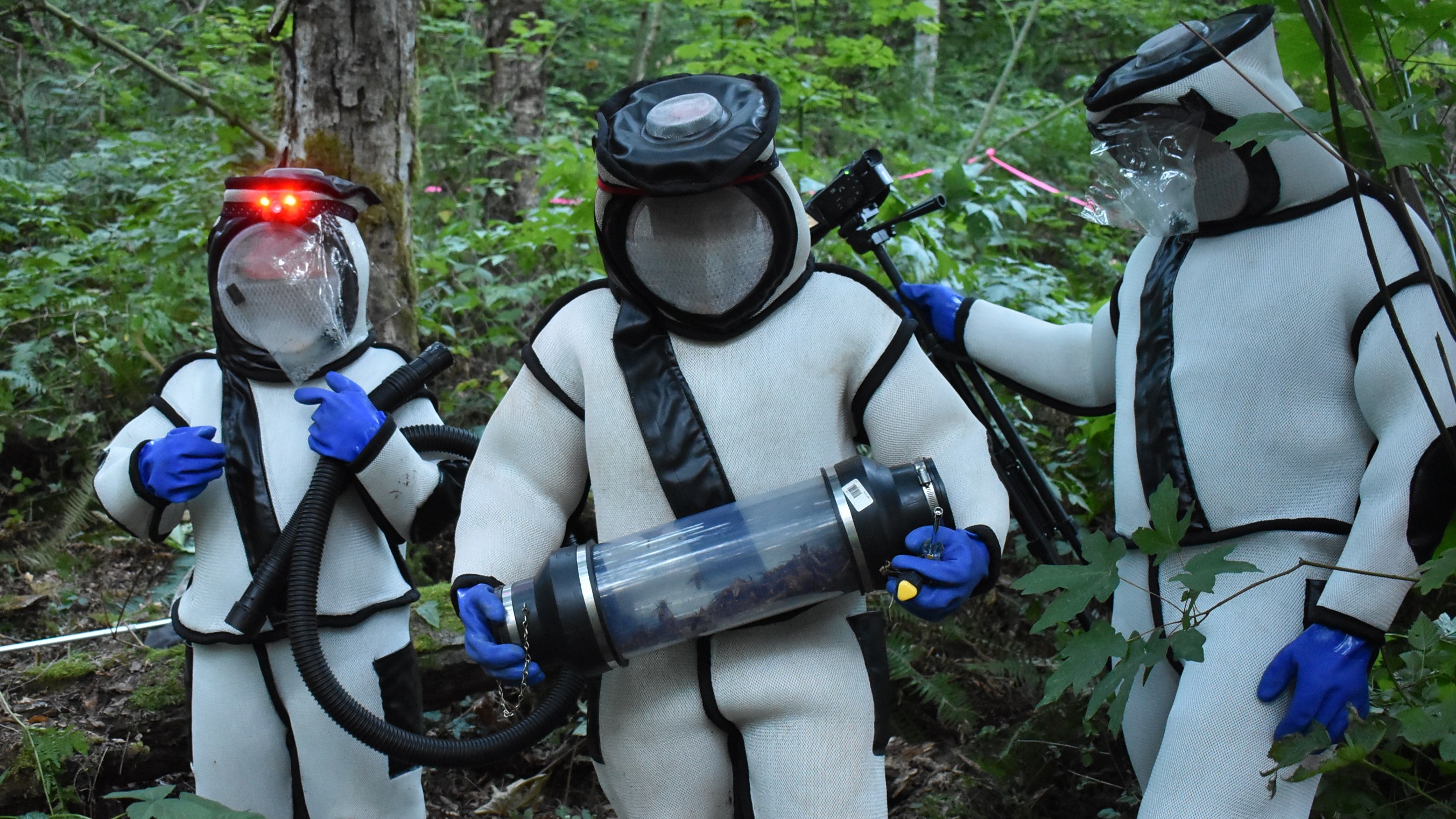'Murder hornets' eradicated from US — but officials say they'll keep 'an eye out' for more
Officials say they've eradicated northern giant hornets, nicknamed "murder hornets," after years of tracking the invasive giant wasps in Washington state.

Invasive "murder hornets" have been completely eradicated in the U.S., officials have announced, after there were no confirmed sightings of the giant wasps in the last three years.
Northern giant hornets (Vespa mandarinia), nicknamed "murder hornets," are the world's largest wasps with a fearsome reputation, posing a threat to U.S. wildlife and human health. Native to Asia, the hornets arrived in North America in 2019, and authorities have been trying to eradicate them ever since.
On Wednesday (Dec. 18), the Washington State Department of Agriculture (WSDA) and the United States Department of Agriculture (USDA) announced they had successfully removed the hornets from Washington state, which was their only known location in the U.S.
"We're pleased to announce the eradication of the northern giant hornet in Washington state," WSDA director Derek Sandison said in a statement.
Related: Here's how to tell a 'murder hornet' from other nasty wasps
These giant hornets, which are also known as Asian giant hornets, kill smaller insects and pose a significant threat to honeybees. Famous for their "slaughter" attacks, the hornets sometimes launch coordinated group assaults on honeybees and can quickly take out entire hives.
The hornets also pose a threat to human health, mostly because some people are allergic to wasp venom, but also because large numbers of hornets attacking all at once can, in rare instances, trigger organ failure even in people who aren't allergic.
Sign up for the Live Science daily newsletter now
Get the world’s most fascinating discoveries delivered straight to your inbox.
The hornets were first reported in North America on Vancouver Island, Canada, and were later confirmed near Blaine, Washington. Authorities responded by targeting and eliminating the hornets' nests.
In 2020, scientists used dental floss to attach tiny radio trackers to live hornets and then followed them back to their nests, The Associated Press reported. Pest control teams have also worked with members of the public to find and eliminate the insects.
"Without the public's support for this effort, it is unlikely we would be announcing the eradication of northern giant hornet today," Sven Spichiger, pest program manager at the WSDA, said in the statement. "All of our nest detections resulted directly or indirectly from public reports. And half of our confirmed detections came from the public."
How did the hornets arrive?
Researchers are unsure how the hornets reached the U.S., but they may have been intentionally or unintentionally imported. Hornets are consumed throughout Asia for food and used in traditional medicines, so it's possible they were illegally imported for those purposes, or they may have accidentally stowed away on international shipments.
In 2021, authorities determined that one dead hornet near Marysville in Washington was unrelated to the original 2019 batch of invaders and must have arrived separately, suggesting multiple introductions. However, this dead hornet was the only one ever found with this genetic makeup, and the 2019 batch now appears to have been eliminated.
A member of the public reported a suspicious hornet in October 2024 in Kitshap County, but the WSDA was unable to locate and identify the insect. Officials placed traps in the area and spoke to members of the community, but they didn't find anything, according to the statement.
"Luckily, we were already on the lookout for hornets when they showed up in Washington in 2019," Spichiger said. "Although they are now eradicated from the state, we'll always be keeping an eye out for them and encourage community members to do the same. They got here once and they could do it again."

Patrick Pester is the trending news writer at Live Science. His work has appeared on other science websites, such as BBC Science Focus and Scientific American. Patrick retrained as a journalist after spending his early career working in zoos and wildlife conservation. He was awarded the Master's Excellence Scholarship to study at Cardiff University where he completed a master's degree in international journalism. He also has a second master's degree in biodiversity, evolution and conservation in action from Middlesex University London. When he isn't writing news, Patrick investigates the sale of human remains.









